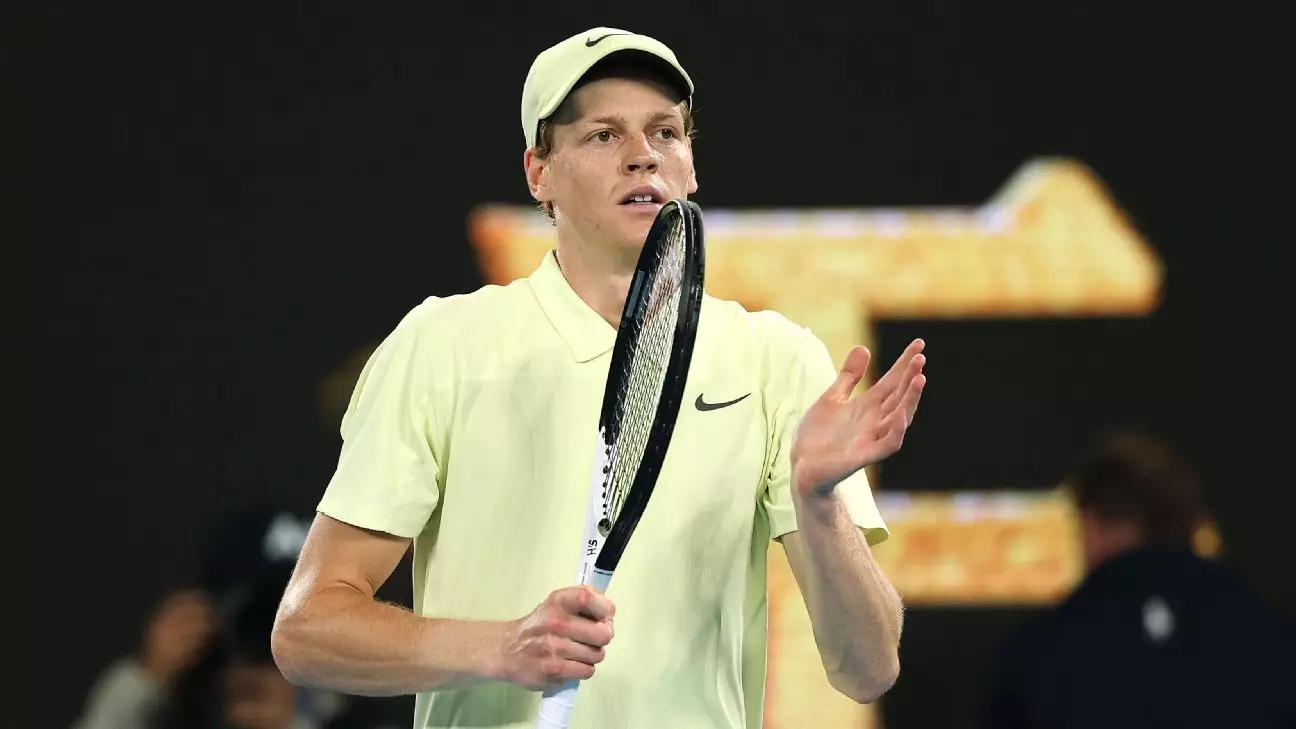Jannik Sinner, the rising star of men’s tennis, has recently found himself in the midst of controversy following a three-month suspension imposed due to violations of doping regulations. Originally slated to compete in an exhibition event in Las Vegas, Sinner’s suspension has forced event organizers to withdraw him from the lineup, paving the way for Casper Ruud to take his place alongside tennis heavyweights such as Alexander Zverev, Taylor Fritz, and Tommy Paul on March 2 at the MGM Rewards Slam.
This sudden change not only disrupts Sinner’s plans but also alters the event dynamics, as his presence would have attracted more attention and fanfare. The announcement of Sinner’s withdrawal underscores the friction between athletic competitiveness and regulatory frameworks, raising questions about the implications of such suspensions on athletes’ careers and public perceptions.
Sinner’s suspension follows a settlement agreement with the World Anti-Doping Agency (WADA), which took issue with a prior ruling from the International Tennis Integrity Agency that exonerated him. The controversy boils down to two positive tests for trace amounts of clostebol, an anabolic steroid, which Sinner attributes to an accidental contamination linked to a topical cream used during massages by a former staff member.
The incident serves as a potent reminder of the fine line athletes must navigate when it comes to substance use, whether intentional or accidental. As a 23-year-old competitor who achieved remarkable success by winning three of the last five major championships, Sinner’s experience highlights the fragility of an athlete’s reputation and career in the face of anti-doping regulations.
Despite the suspension, there is a silver lining for Sinner, as he is expected to make his return to competitive tennis at the Rome Masters in early May. Conveniently, the timing of the ban allows him to avoid missing any Grand Slam tournaments, with the next one being the French Open scheduled to commence on May 25. This strategically timed return could enable Sinner to regain his momentum in the sport without the elephant in the room overshadowing his performance.
The competition landscape will be markedly altered during his absence, with players like Ruud and Zverev, who both hold a record of being runners-up at Grand Slams, preparing to capitalize on opportunities presented in tournaments without Sinner’s participation. Meanwhile, Fritz, who lost to Sinner in last year’s US Open final, and Paul—a player noted for his strong performances—will undoubtedly feel empowered, using this moment to elevate their positions in the rankings.
As the tennis world watches Sinner navigate this challenging period, the incident serves as an impetus for broader discussions about doping regulations in sports. How athletes manage substances linked to their physical performance can often dictate their careers, and the consequences can be severe, albeit sometimes unintentional. The need for clearer guidelines and support for athletes in understanding substance use is paramount to avoid potential pitfalls.
While Jannik Sinner faces a temporary setback, the overall impact on his career hinges on how efficiently he can return to form post-ban and the lessons drawn from this episode. As the tennis community continues to evolve, so too must the conversation around fairness, transparency, and the well-being of its athletes.


Leave a Reply